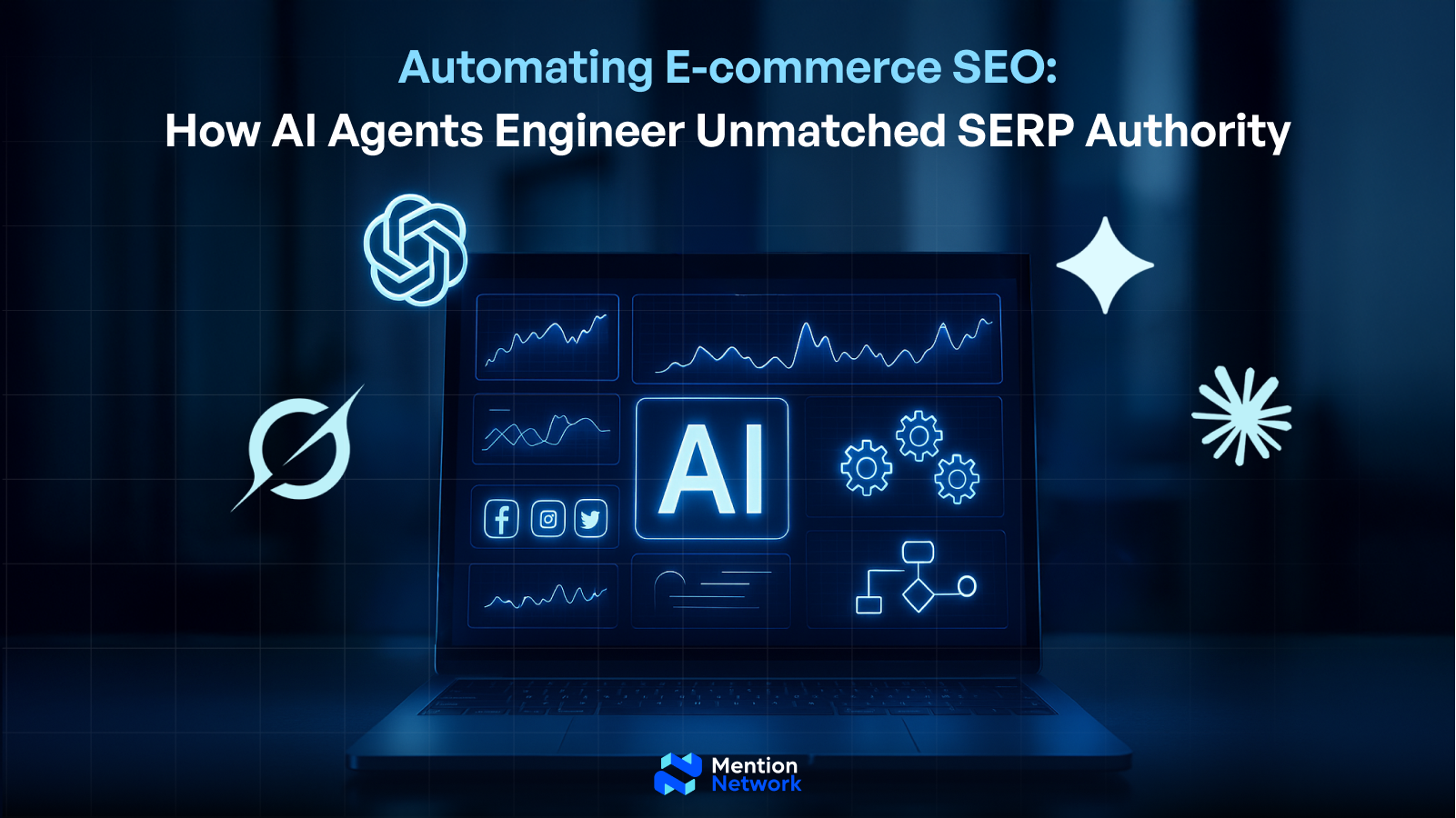Mastering AI Visibility in the Generative Era

In the world of digital marketing, visibility is oxygen. This metric was measured almost exclusively by a website’s ranking position on a Search Engine Results Page (SERP). An entire industry, Search Engine Optimization (SEO), was built on climbing those famous "blue links."
Today, everything has changed. The rise of sophisticated Large Language Models (LLMs) and the integration of Generative AI into search engines think Google's AI Overviews, Microsoft Copilot, and conversational platforms like ChatGPT and Perplexity have fractured the user journey. People are increasingly getting direct, synthesized answers without clicking through to a website. This is the AI Search Shift, and it introduces a critical new dimension to your digital strategy: AI Search Visibility.
Simply ranking first on Google is no longer enough, your brand must be the authoritative source that the AI chooses to cite, recommend, and synthesize into its direct answers. The tools to measure and optimize for this new reality are known as AI Search Visibility Tools. For marketers, developers, founders, and investors alike, understanding and deploying these instruments is not optional, it's the new baseline for digital relevance and growth.
- Visibility Redefined: Success is moving from ranking a page (SEO) to being cited in a direct answer (AI Search Visibility, or GEO/AISO).
- The Zero-Click Challenge: AI answers satisfy user intent directly, leading to fewer clicks for some types of queries.
- Structured Content is King: AI models prefer content that is easily digestible, authoritative, and structured (Q&A, lists, clear headings, schema).
- Tools Close the Measurement Gap: Specialized AI Search Visibility tools track brand mentions, sentiment, and citations across multiple AI platforms, filling a void left by traditional SEO analytics.
- The Future is Hybrid: The most effective strategy combines classic technical SEO with Generative Engine Optimization (GEO) for both search types.
The Shift: Why Traditional SEO Tools Can't Measure AI Visibility
Traditional SEO tools are blind to the most critical new engagement channel, the AI-generated answer because they are designed to track "blue link" positions and clicks, metrics that are increasingly bypassed by conversational search.
For years, the SEO stack was clear: use tools like Semrush or Ahrefs to monitor keyword rankings, organic traffic, and backlink profiles. These tools are fundamentally designed to track a deterministic system, the ranked list of 10 links on a SERP.
The Generative AI environment operates differently. When a user asks an AI-powered search engine a question, the Large Language Model (LLM) synthesizes an answer from multiple source websites. It doesn't just display a list, it acts as an intelligent curator, often citing a few authoritative sources but sometimes just presenting the answer as fact without a direct link.
Why it Matters: The AI Measurement Gap
The gap is clear: your content could be highly authoritative and trustworthy, but if you're not tracking how AI models perceive and utilize it, you’re missing a huge, and growing, share of voice. Without a dedicated AI search visibility tool, you are operating without a map in this new digital landscape.
What AI Search Visibility Tools Actually Do

These specialized tools are essential for answering two critical questions: "Are the AI platforms talking about my brand?" and "What are they saying?" They track, score, and benchmark your brand's presence in AI-generated content across the entire ecosystem.
An AI search visibility tool is a marketing intelligence platform purpose-built for the Generative Engine Optimization (GEO) era. They operate by submitting hundreds or thousands of industry-specific and branded queries to major AI search platforms and analyzing the resulting answers.
How It Works: Core Capabilities
- Cross-Platform Monitoring: The most basic yet crucial function is monitoring major AI answer engines (Google AI Overviews, ChatGPT, Gemini, Perplexity, etc.) simultaneously. Each LLM is trained differently and cites sources with its own unique logic, so a multi-platform view is necessary to avoid blind spots.
- Citation & Mention Tracking: This is the heart of the tool. It goes beyond links to track every instance your brand name, product, or key personnel are mentioned or referenced in the AI's generated response even if it's an unlinked text-only mention. This is the new "impression" metric.
- Sentiment and Context Analysis: An AI mention is only valuable if it’s positive and relevant. Tools analyze the surrounding context to determine the sentiment (positive, negative, neutral) with which your brand is discussed. This allows you to spot and address reputation issues instantly.
- Competitive Benchmarking (Share of Voice): They run the same prompts for your industry, showing you which competitors are being cited alongside or instead of you. This reveals the AI Share of Voice, the percentage of relevant AI answers that feature your brand which is now the ultimate metric of topical authority.
- AI Readiness Scoring & Optimization Tips: Many advanced tools audit your website for AI-friendly signals like clear schema markup, structured Q&A content, and precise topical clusters, offering actionable recommendations to improve your site's "cite-ability."
Strategy for Marketers: The GEO/AISO Playbook

A successful strategy requires a dual focus: maintaining a strong technical SEO foundation while simultaneously engineering content specifically to be interpreted, trusted, and cited by Large Language Models.
The best strategy is an integrated one, often referred to as Generative Engine Optimization (GEO) or AI Search Optimization (AISO). It's about ensuring your content is machine-readable, authoritative, and perfectly aligned with user intent for the AI to synthesize.
Creating "Cite-Worthy" Content
- Structure for Snippets: AI loves structure. Use Q&A formats, scannable bulleted lists, and clear H2/H3 headings to define specific content chunks. If an LLM needs to answer "What are the three core benefits of [Product X]?", a clean bulleted list on your page makes it easy to lift and cite.
- Semantic Authority: Move beyond simple keyword stuffing. Your content must demonstrate deep topical authority and expertise. Use precise, unambiguous language and back up claims with data. The AI is looking for the most reliable, trustworthy answer, not just a keyword match.
- Implement Advanced Schema: Utilize structured data markup (like FAQPage, HowTo, and specific entity schemas) so that AI models can quickly and reliably parse the factual details about your business, products, and services. Developers play a crucial role in correctly implementing this technical layer.
- Go Deep, Not Just Broad: Since AI often covers general informational queries, your content strategy should pivot to more detailed, specialized, and long-tail bottom-of-funnel (BOFU) topics where expertise and unique insights are paramount. AI will summarize the 'what' you must provide the authoritative 'how' and 'why'.
Navigating the Investment Landscape: For Founders and Investors
For founders, AI Search Visibility tools provide the competitive data to inform product and content strategy for investors, they offer a quantifiable, forward-looking metric to evaluate a brand's relevance in the shifting market.
For a founder or a new venture, early AI search visibility is a crucial measure of product-market fit in a dynamic ecosystem. If your brand is not registering in AI answers, your competitor is stealing the future share of voice and establishing a relationship of trust with the AI, which acts as the new intermediary to the customer.
For an investor evaluating a MarTech or eCommerce play, a company's "AI Visibility Score" becomes as important as its traditional Domain Authority. It signals whether a business is strategically positioned to capture the coming wave of consumer spending that flows through AI-guided discovery. Beginner marketers can leverage this data to prove the value of a modern SEO strategy to leadership.
The Future is Conversational: Beyond the Blue Link
The trajectory is undeniable: search is becoming a two-way conversation powered by sophisticated AI. Gartner predicts that traditional search engine volume could drop by up to 25% by 2026 due to the adoption of AI platforms and virtual agents. This is not a distant problem it is a present reality that is actively eroding traditional organic traffic for unprepared brands.
The transition from a link-based economy to an answer-based economy is the defining digital shift of our time. AI search visibility tools are the essential instruments that allow us to measure, optimize, and dominate this new frontier. They transform a terrifying drop in organic traffic into an actionable dataset for growth.
We are entering a phase where the most successful brands will be those that have mastered the art of being the authoritative, cited source in an AI-generated answer. The visibility you gain here creates an invaluable halo effect of trust and authority, establishing your brand as a credible entity long before a customer ever clicks a link. The goal is no longer to get the click the goal is to earn the mention.
Frequently Asked Questions (FAQ)
1. How is GEO different from AISO?
GEO (Generative Engine Optimization) and AISO (AI Search Optimization) both help content get cited and trusted by AI engines like ChatGPT or Google’s AI Overviews.
GEO focuses more on structured, semantic, and citation-ready content, it’s the next evolution of SEO for the AI era.
2. Does optimizing for AI visibility hurt Google rankings?
No. The same practices that boost AI visibility high-quality, well-structured, and schema-rich content — also improve your Google rankings.
An AI-optimized site is naturally an SEO-strong site.
3. Which tools lead in AI Search Visibility?
Top tools include Semrush’s AI SEO Toolkit, SE Ranking’s AI Visibility Tracker, and dedicated platforms like Peec AI, Rankability, and Mention Network.
Choose based on your needs enterprise analytics or startup simplicity.

